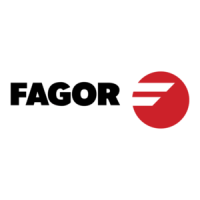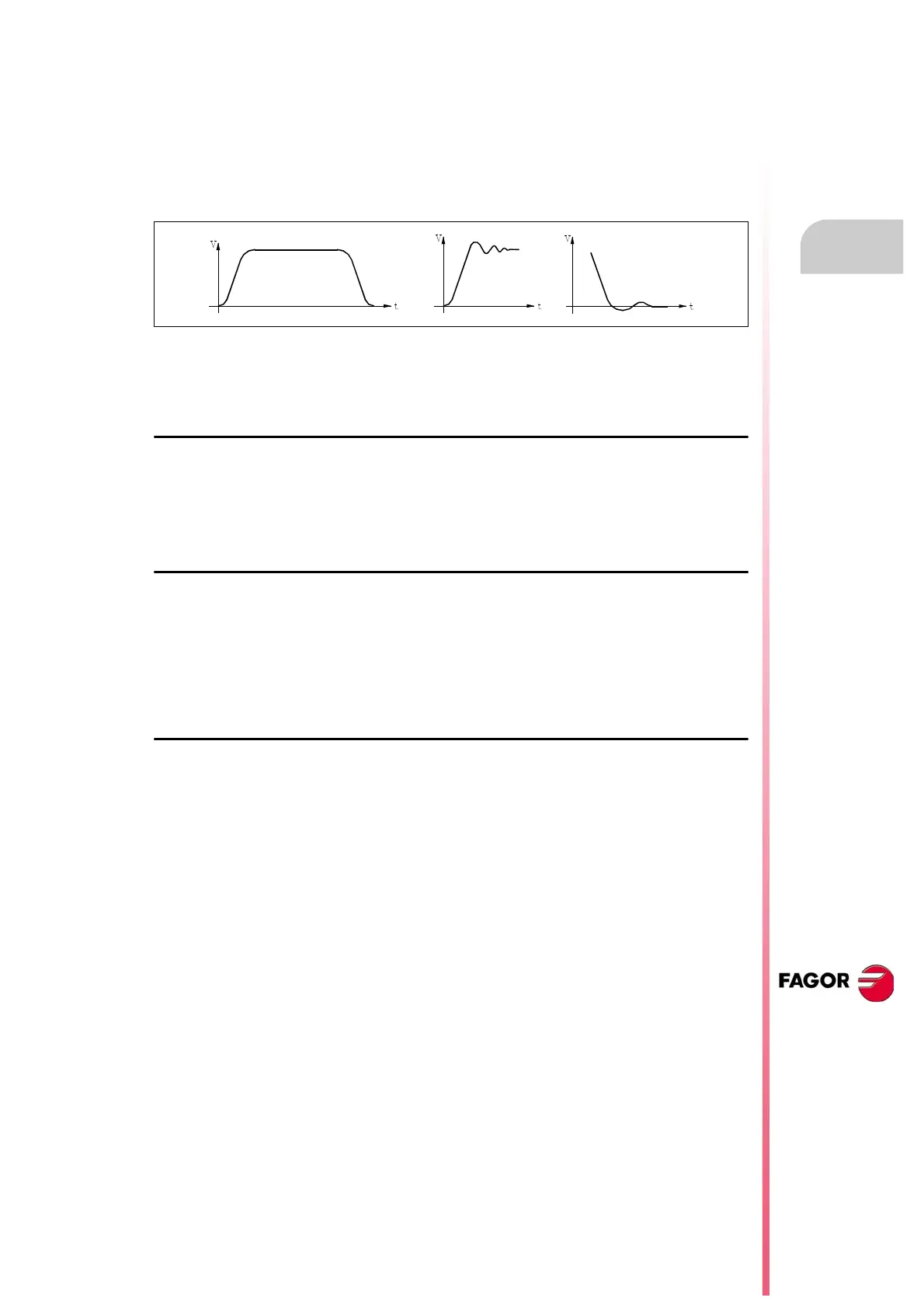Installation manual
CNC 8035
CONCEPTS
Axis adjustment
5.
(SOFT M: V15.3X)
(S
OFT T: V16.3X)
·205·
5.5.2 Gain setting
The various types of gains must be adjusted for each axis in order to optimize the system's
performance for the programmed movements.
An oscilloscope is highly recommended to make this critical adjustment by monitoring the tacho
signals. The illustration below shows the optimum shape for this signal (on the left) and the
instabilities to be avoided during start-up and braking.
There are three gain types for each axis. They are adjusted by means of axis machine parameters
and following the sequence indicated next.
Proportional gain
It defines the velocity command corresponding to a feedrate resulting in 1 mm of following error.
It is defined with a.m.p. PROGAIN (P23).
Feed-forward gain
It sets the percentage of velocity command due to the programmed feedrate.
To use it, acc/dec must be active ACCTIME (P18).
It is defined with a.m.p. FFGAIN (P25).
Derivative gain or AC-forward gain
The "derivative gain" sets the percentage of velocity command applied depending on the
fluctuations of following error.
The "AC-forward gain" sets the percentage of velocity command proportional to the feedrate
increments (acceleration and deceleration stages).
To use it, acc/dec must be active ACCTIME (P18).
It is defined with a.m.p. DERGAIN (P24) and ACFGAIN (P46).
If ACFGAIN = No it applies derivative gain
If ACFGAIN = Yes it applies AC-forward gain.

